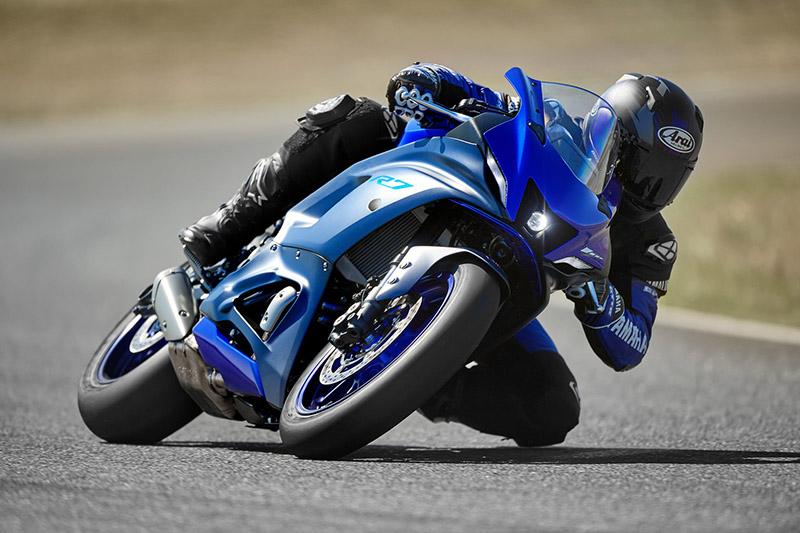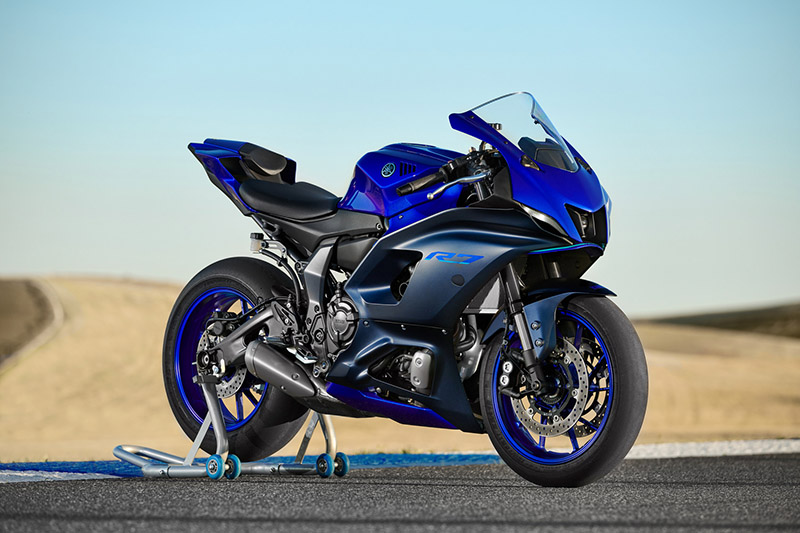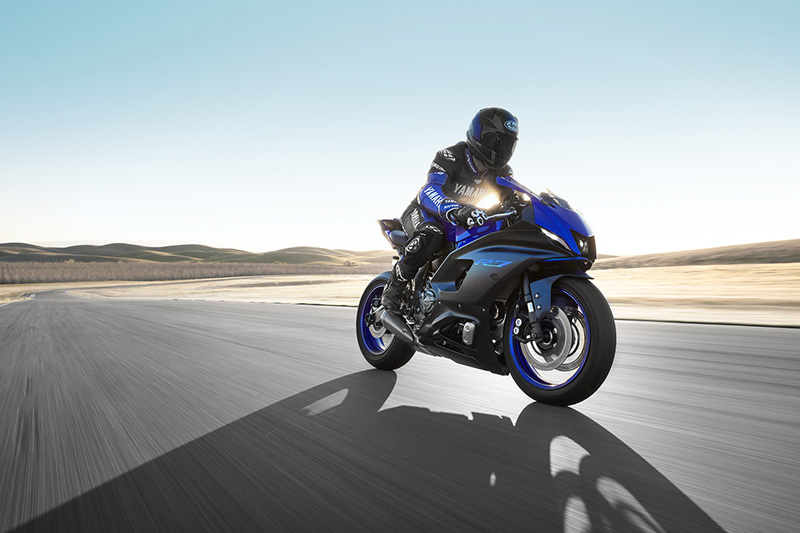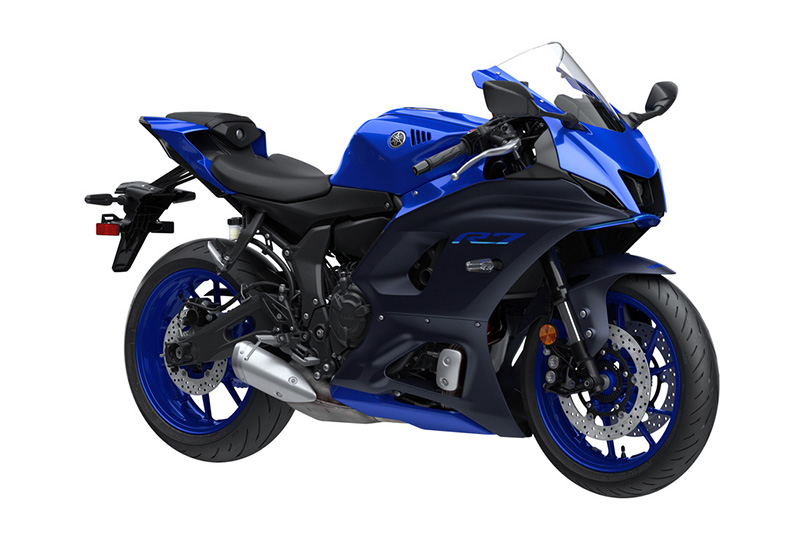
When Yamaha launched the MT-07 for 2015, it was hoping to build on the success of its MT-09, a rowdy sport standard powered by an 847cc in-line triple with a crossplane crankshaft that was introduced the previous year.
The smaller, more affordable MT-07 had an all-new liquid-cooled, 689cc parallel-twin with a crossplane-style 270-degree crankshaft and an uneven firing order, giving it a lively feel and good low-end torque. That 689cc CP2 engine proved to be a versatile platform that not only powers flat-track race bikes but also Yamaha’s Ténéré 700 adventure bike.

Now it will power a new fully-faired sportbike, the 2022 Yamaha YZF-R7. Although the R7 takes its name from the 1999 YZF-R7 (aka OW-02), a 500-unit race homologation special built to compete in World Superbike and other series, the new R7 is built for mass consumption. Its MSRP is $8,999.
With no YZF-R6 in Yamaha’s lineup for 2021 and its fate for 2022 uncertain, the new R7 will fit into Yamaha’s supersport R-Series between the entry-level YZF-R3 and the top-of-the-line YZF-R1 and R1M.

Yamaha’s CP2 engine is a compact, versatile powerplant. Forged aluminum pistons with direct-plated cylinders integrated with the crankcase are light, strong and able to withstand high temperatures and high rpm. An optimized secondary gear ratio is said to provide an exhilarating ride and a sporty feel, and a 6-speed transmission is mated to an assist-and-slipper clutch.
The new YZF-R7 has an all-new chassis, with a narrow, high-strength steel frame that has aluminum center braces near the swingarm pivot for added torsional rigidity. Compared to the MT-07, the R7 has a shorter wheelbase (54.9 inches vs. 55.1) and less rake (23.4 degrees vs. 24.5; trail is the same at 3.7 inches), which should give it even sharper handling. Claimed wet weight, however, is slightly heavier at 414 pounds vs. 406 on the MT-07, even though the R7 has less fuel capacity (3.4 gals. vs. 3.7).

Up front, the YZF-R7 has a fully adjustable KYB 41mm USD fork that’s mounted to the steering tube via a forged aluminum lower triple clamp and a gravity-cast aluminum upper triple clamp. Out back, a linked-type Monocross shock is adjustable for spring preload and rebound damping. The shock is mounted horizontally, bolted directly to the crankcase to reduce weight and keep mass centralized. Suspension travel is 5.1 inches front and rear.
Dual radial-mount 4-piston front brake calipers squeeze 298mm discs, and a Brembo radial master cylinder should provide good feel at the lever. A single rear caliper squeezes a 245mm rotor. The YZF-R7 has 17-inch cast wheels shod with Bridgestone Battlax Hypersport S22 tires (120/70-ZR17 front, 180/55-ZR17 rear).

To enhance its sporty feel, the YZF-R7 has a racing-inspired cockpit that Yamaha says has a comfortable and confidence-inspiring riding position. Seat material and foam from the YZF-R1 and new low-profile fuel tank covers with deep knee pockets are designed to provide freedom of movement as well as a planted feel when leaned over or braking. Clip-on handlebars allow for an aggressive riding position, especially when tucked in behind the windscreen.
An LCD instrument panel has a high-contrast negative display, and new handlebar switches make it easy to scroll through the meter’s various functions. The R7 features Yamaha’s R-Series M-shaped intake duct and twin-eye front design, and LED lighting is used all around.
The 2022 Yamaha YZF-R7 will be available in Team Yamaha Blue and Performance Black for $8,999. It will be in dealerships in June.
We’re getting a first ride on the new R7 soon, so stay tuned for our review.
2022 Yamaha YZF-R7 Specs
Base Price: $8,999
Website: yamahamotorsports.com
Engine Type: Liquid-cooled, transverse parallel twin, DOHC w/ 4 valves per cyl.
Bore x Stroke: 80.0 x 68.6mm
Displacement: 689cc
Transmission: 6-speed, cable-actuated assist-and-slipper wet clutch
Final Drive: Chain
Wheelbase: 54.9 in.
Rake/Trail: 23.4 degrees/3.5 in.
Seat Height: 31.7 in.
Wet Weight: 414 lbs. (claimed)
Fuel Capacity: 3.4 gals.
The post 2022 Yamaha YZF-R7 | First Look Review first appeared on Rider Magazine.
Source: RiderMagazine.com
